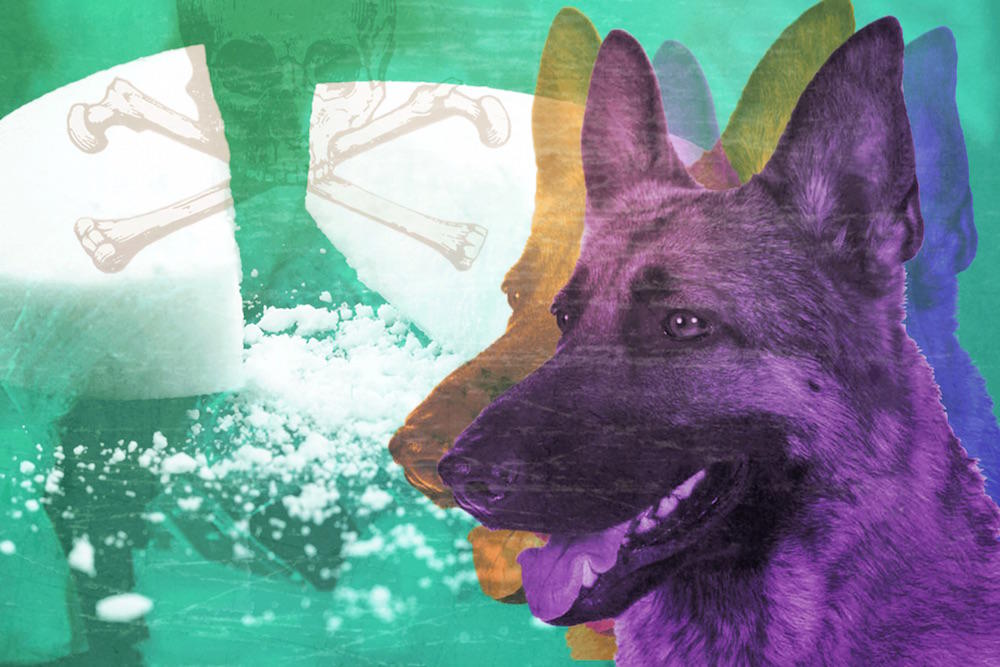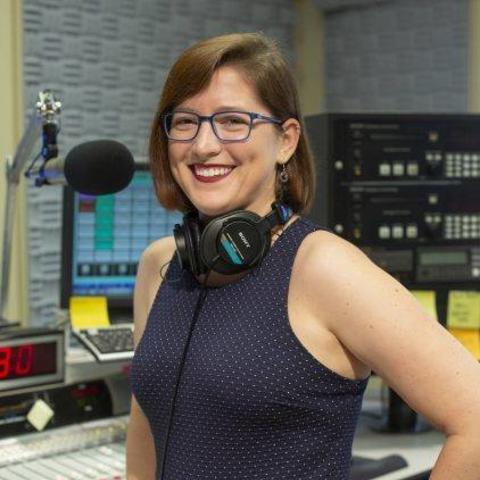Section Branding
Header Content
When Your Weapon Is Your Nose: Police Work To Protect K-9s From Potent Opioids
Primary Content
Drugs like fentanyl aren’t just creating new risks for human police officers. The dogs who use their powerful noses to sniff out drugs are inhaling the dangerous synthetic opioids as well. So police departments are taking new steps to protect their dogs – and respond if the K-9s get sick.Police departments are taking new steps to protect their dogs from drugs like fentanyl.
Normally, it’s a police dog’s job to protect its handler, not the other way around. If you’re a police dog and somebody runs at your human waving a weapon, there’s only one response: you attack.
At a recent certification test, coastal Georgia officers and their dogs ran just this scenario. The dogs charged an “attacker,” really another officer, wearing a big protective pad so the dog doesn’t bite through his arm. The dogs were ready to defend their handlers – and they’re good at it.
“These are the best of the best of the dogs that come through the police program,” said Savannah-Chatham police Cpl. Benjamin Ferrero. “It takes a very special type of dog to be willing to do the patrol work.”
The patrol work he does involves tracking down and apprehending suspects. He and his dog Dooly also work on narcotics, sniffing for drugs. And with dangerous synthetic opioids flooding the streets, Ferrero said it’s now his turn to keep his dog safe.
“They’re our partners, they’re our best friends,” he said, “and we ask them to do a lot for us and they do it happily and willingly, without hesitation for us. So we’re trying to do as much as we can to protect them.”
That means changing how police use their dogs. The K-9s can still sniff outside, say, a car, to check whether there are drugs somewhere inside. But the officers aren’t sending them in to find the stash itself because there could be fentanyl in any drugs the dog finds, not just in cases obviously involving heroin or prescription pills.
“It’s being mixed with marijuana, it’s being mixed with heroin and cocaine,” Ferrero said, “and even in its pure form it’s just – it’s so dangerous and it’s so highly concentrated, people just don’t understand the danger that’s coming with it.”
The equivalent of a few grains of salt can make a human officer sick, and it takes even less for a dog.
David Furland of the United States Police Canine Association said he’s hearing concerns like this from departments throughout the country – and some dogs have been exposed.
“Anecdotally, I probably receive, oh, a half dozen reports each month of agencies or K-9 units that have deployed Narcan or something else, or otherwise had their dogs somewhat ODing on exposure to some of these drugs,” Furland said.
Narcan, or naloxone, is the overdose-reversing drug that police departments increasingly carry to keep both officers and civilians safe. For people, it’s a nasal spray. Furland and veterinarians said that has worked for dogs who’ve been exposed.
But clinical trials in dogs have only looked at injections. And in Georgia, medicine used on a dog has to be prescribed by a veterinarian – so either way, police dogs need their own separate doses of the expensive drug.
Ferrero said Savannah police are working on it.
“We’re trying to get it to where we can have it and be prepared for any situation we come across,” he said. “But it’s just one of those things where it’s so new and it’s happening so fast that we’re catching up on the curve.”
In the meantime, the officers are carrying charcoal to induce vomiting if need be – and keeping a watchful eye on the dogs in case they’re exposed.
Furland said police officers, especially in narcotics, are worried about their dogs sniffing the dangerous drugs. But he said that ultimately doesn’t change much.
“Just because there’s risk doesn’t mean that we don’t go into that threat area,” he said. “It just means we need to be properly trained, we need to be careful, we need to be properly equipped.”
Police in Savannah are working on just that kind of training – and on how to respond to protect their dogs from opioids.


